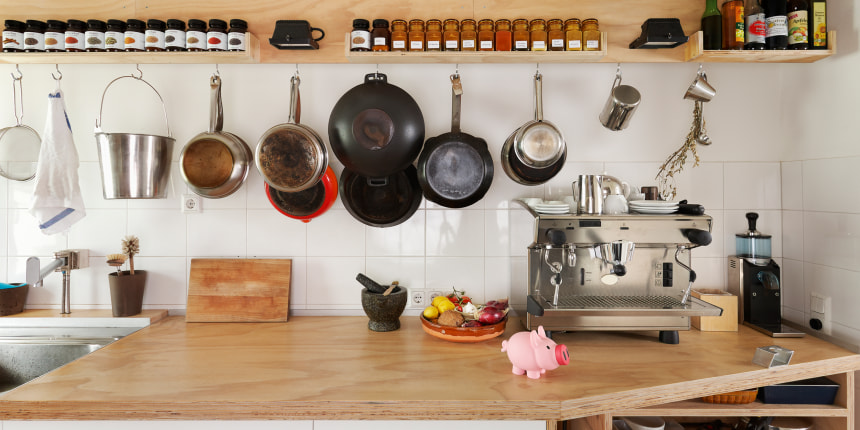539

Forget expensive appliances, you likely already own everything you need to set yourself up for weight-loss success.Spaces Images / Getty
As a registered dietitian nutritionist, I spend a lot of time thinking about kitchen organization. After all, the average American is in the kitchen for 37 minutes a day, prepping food and cleaning up, per data from the United States Department of Agriculture. And then there’s the time you spend eating.
Although I love to shop for pretty kitchen tools and gadgets, the real fun is in making easy organizational tweaks to promote healthy eating and maximize weight-loss efforts. Here are a few of my favorite tips for doing so. The best part? They’re all super easy to implement!
- Have a set of measuring cups and spoons. Using measuring tools helps you get a handle on what a portion looks like so you won’t overeat. If my clients don’t own these tools, I send them to the store after our first meeting to buy them! One set works — but if you’re like me, you may find multiple sets useful. I like to keep tablespoons in containers of nuts and seeds to make healthy snacking a no-brainer.
- Place fruit on the counter. Display those apples, pears, oranges and bananas on the countertop. You can use a pretty fruit bowl, or you can repurpose a pie plate (that’s what I do!). People who keep fruit on the countertop are more likely to have a lower BMI, a measure of body fat based on height and weight, according to a study published in Health Education and Behavior. When you want a snack, you’ll be more likely to reach for the fruit because it’s visible.
- Hide the sugary stuff.Love chocolate? Can’t stop yourself when the jelly beans are in plain sight? People who kept candy on their desk ate almost three times more candy than volunteers who hid candy containers in their desks — and close to six times more than people who had to walk a short distance to get to the candy — according to a study published in the journal Appetite. Use this strategy in your kitchen: Hide candy in the back of the pantry or freezer. Better yet, remove the treats from the house completely. If you want a cookie, go to the bakery and buy one so you’re not tempted to eat an entire package!
- Rearrange your pantry. Make healthy food easier to get to by placing it in the front of a cabinet. In the Health Education and Behavior study, normal-weight people were more likely to store snack foods out of sight in a cupboard or a drawer and to place healthier foods in more visible places. Women who had soda and breakfast cereal on the countertop weighed more, as did men with candy visible on the counter.
- Have an emergency stash. One of the first things I advise new clients is shopping for a supply of healthy food. Fresh fruits, veggies and proteins are fantastic to have on hand. But if you’re a few days late with this week’s grocery run or you’re just getting back from vacation, you’ll want to dip into your emergency supply for a healthy meal. Store frozen veggies and fruit in the freezer and brown rice, quinoa, canned beans, nuts and seeds in the pantry.
- Confine food to the kitchen. Don’t hide food throughout the house! This means saying good riddance to that candy bowl in the family room and the cookie stash in your home office. Obese participants were more likely to have food stored in rooms beyond the kitchen, according to a study in the International Journal of Obesity.
- Bring sound into your kitchen. Whether you have a radio, speakers for your iPhone, or another way to listen to music, play soft tunes while you cook and eat. This may help you feel relaxed and encourage you to eat less, found a study by Cornell University researchers.
[“Source-nbcnews”]
